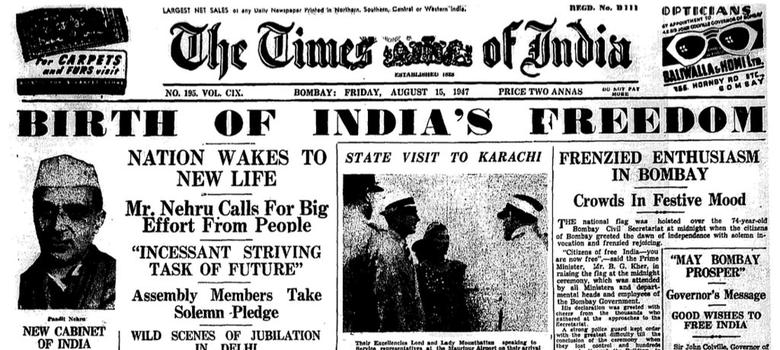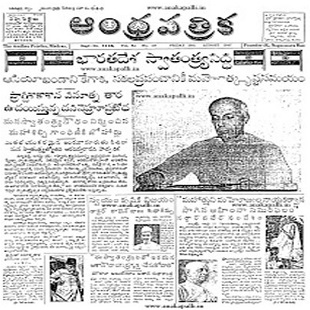
In India printing press first came into force from Portugal. Basically, father Caper Casillo who was doing his missionary work in Goa, realized that if he got any printing press that he could do his missionary work even more properly, which is why he ordered printing press from Portugal. That’s how the first-time printing press came into Goa in 1556.
Later Bombay adopted printing press in 1670 but the surprising fact was that after for approx. 100 years not even a single newspaper got published from Bombay.
After this in 1780, the failed businessman from London, James Augustus Hickey arrived in India and set up his printing press in Calcutta, that’s how the first newspaper of India got published named as “Bengal Gazette”
‘Bengal Gazette’ was an English newspaper. Through this newspaper the James Augustus Hickey was exposing corruption and malfunction of East India Company. But Warren Hasting didn’t like it at all and within 2 years ‘Bengal Gazette’ publication got shut down.
Then between 1784- 1789 some more English paper got published like “Calcutta Gazette”, “Bengal General” and “Bombay Herald”. “Bombay Herald” was the first newspaper which got published from Bombay later changed as “Bombay Gazette”. But the thing to introspect was that despite having such a technology in 1670, they had to wait for 1789.
Then in 1799, ‘Censorship of Press Act’ come into force. Actually, at that time the France invasion was penetrating in India, then Lord Wellesley introspect that French publication could prejudice Indian people against British
According to this press act publishers couldn’t publish anything against government also publishers had to give one original of it to Censor Board before publishing anything also there should be publisher, author and otherdetails should be mentioned. But in 1818 Lord Hasting abolished censorship of Press Act and same year India its first Vernacular Newspaper which got published as ‘’Samachar Darpan’’ which got published in Bengali Language.
In 1822 Bombay Samachar which got published which name later got changed into Bombay Samachar also it was India’s oldest newspaper which publishes now also.
In 1822, Raja Ram Mohan Roy started Sambad Kaumuali, through this newspaper he was campaigning against satipratha. Just after one year James Auden introduced ‘Licensing Regular Act’. In which had to had a license without it you couldn’t publish a newspaper. Many newspapers got impacted by it and later got closed.
In 1826, the ‘Udant Martand’ the first Hindi newspaper got published from India. Because of which every year on 30 May is celebrated as Hindi Journalism Day.
In 1855, Charles Metcalf abolished the Licensing Regulation Act. Because of his Liberal policies he was also addressed as Liberator of press but the directors of East Indian Company didn’t like it and within a year Metcalf had to resign.

Examples: In 1868, Amrita Bazaar Patrika got published in Bengal. In 1870’s, a large number of newspapers started publishing in Hindi, Gujarati, Bengali etc. After this act Amrita Bazaar Patrika stopped its publication in Bengali and suddenly started its publication on English. But later in 1882 Lord Ripen ended the Vernacular Press Act.
Examples: Newspaper published by famous personalities: First Mahatma Gandhi he published young India and Navjivan which published in 1919. Motilal Nehru published, Independent India, Jawaharlal Nehru published National Herald in 1938, Dadasahib Naoroji published newspaper in Gujarati.
That’s a rich and intricate history or the evolution of printing press and newspapers in India, spanning several centuries and reflecting the changed socio-poetical landscape of the country. Father Caper Castillo’s iniative to bringing the first printing press to Goa in 1556 forting missionary work laid the foundation for the dissemination of printed material in India. The subsequently adoption of printing press in Bombay in 1670, despite the delay in the publication of newspapers, signifies the gradual spread of printing technology across different regions.
The establishment of “Bengal Gazette” by James Augustus Hickey in Calcutta in 1780 marked a significant milestone in Indian journalism, despite its eventual closure due to opposition from figures like Warren Hastings. The emergence of newspapers like the “Calcutta Gazette,” “Bengal General,” and “Bombay Herald” between 1784-1789 highlighted the growing presence of newspapers in major cities.
The introduction of the ‘Censorship of Press Act’ in 1799, amidst concerning over French influence during the invasion of France, underscore the British authorities’ effort to controlling the dissemination of information. However, the abolition of the act in 1818 by Lord Hastings signaled a shift toward greater press freedom, leading to the publication of India’s first vernacular newspaper, “Samachar Darpan,” in Bengali.
The establishment of “Bombay Samachar” in 1822, followed by the introduction of the ‘Licensing Regulation Act’ by James Auden, and the subsequent publication of the first Hindi newspaper, “Udant Martand,” in 1826, reflect the dynamic nacher of India’s newspaper landscape.
The abolishing of the ‘Licensing Regulation Act’ in 1855 by Charles Metcalf, despite opposing from directors of the East India Company, paved the way for the expansion of the press. This period saw the publication of newspapers like the “Amrita Bazaar Patrika” in Bengal in 1868, and a surge in newspapers in different languages such as Hindi, Gujarati, and Bengali in the 1870s.
The examples provided off newspapers publish by prominent personalities such as Mahatma Gandhi, Motilal Nehru, and Jawaharlal Nehru illiterates the role of newspapers in shaping public discourse and political movements in India’s history.
Overall, this historical narrative highlights the resilience and signifigates of the press in India’s journey towards independence and beyond!!!

